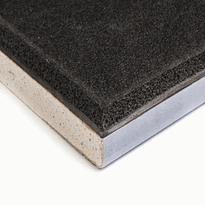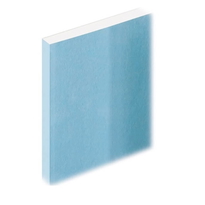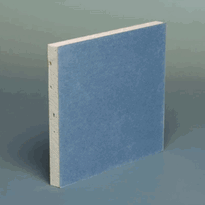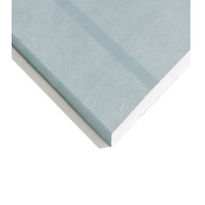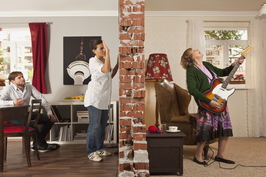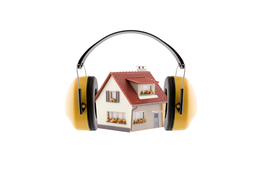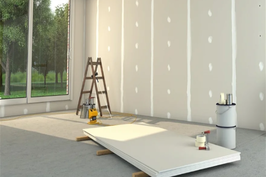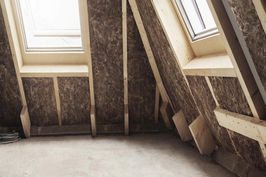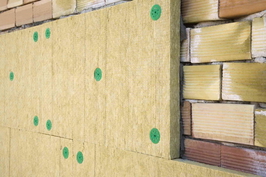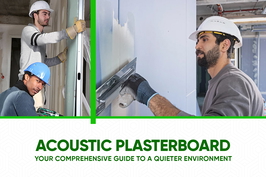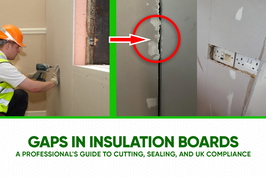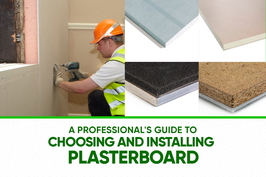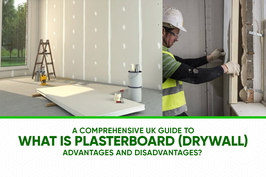Acoustic Plasterboard Cost
The cost of acoustic plasterboard in the UK varies depending on several factors, including the quality of the material, thickness, additional soundproofing layers, and the complexity of the installation. Generally, standard acoustic plasterboards range from approximately £10 to £12 per square metre. Specialty boards designed for enhanced sound insulation or specific acoustic requirements tend to be more expensive.
For larger projects or installations involving complex designs—such as curved walls or high ceilings—the overall costs can increase significantly. These additional expenses are primarily due to higher labour requirements and more detailed finishing work.
To ensure accurate budgeting, it is important to consider both material costs and labour requirements. Careful planning and detailed quotations can help maximise efficiency and ensure the project stays within budget.
Factors Affecting Acoustic Plasterboard Pricing
Several key factors influence the pricing of acoustic plasterboard, beginning with the quality and composition of the materials utilised. Acoustic plasterboards are manufactured to be thicker and denser than standard options to enhance sound insulation, often incorporating integrated soundproofing layers, which increase manufacturing costs. These layers effectively improve noise reduction, thus raising the overall expense. The use of higher density materials provides greater resistance to sound transmission, thus contributing to their premium price compared to conventional gypsum boards. Furthermore, these specialised materials support improved privacy and noise reduction, justifying the cost differential. The construction and manufacturing processes involved in producing acoustic boards are more complex and costly, reflecting their advanced acoustic performance qualities. Overall, the combination of high-quality, soundproofing materials and intricate production techniques plays a vital role in defining the higher costs associated with acoustic plasterboard, aligning price with its functional and acoustic efficiency objectives.
Cost Estimates for Different Room Types
The cost of installing acoustic plasterboard varies widely depending on the type of room being soundproofed, as each space has its own unique size and functional requirements that influence both material and labour costs.
Bedrooms, which typically range from approximately 9 to 17 square metres, can cost from £800 to £4,200. Larger primary bedrooms may reach costs of up to £6,500, reflecting the increased area to be treated.
Living rooms, generally spanning 23 to 33 square metres, require between £2,000 and £9,000, representing the larger size and additional complexity involved in soundproofing such spaces.
Home theatres, which are usually around 19 to 28 square metres, tend to cost between £1,600 and £7,500.
The specialised soundproofing requirements in these rooms account for the higher end of this range.
Home offices and basements, with sizes up to roughly 17 and 28 square metres respectively, typically cost between £800 and £4,200, and £1,500 to £7,500, depending on the scope of work and materials used.
Material Expenses and Selection Tips
Choosing the appropriate acoustic plasterboard involves careful consideration of material costs and their impact on project budgets. Standard plasterboard typically costs around £4-£5 per square metre, making it the most economical option. Acoustic plasterboard generally ranges between £10-£12 per square metre, depending on the manufacturer and size. Fire-resistant varieties are priced at approximately £6-£8 per square metre, offering additional safety benefits. Specialised boards, such as those combining fire resistance and soundproofing, tend to have higher costs based on their specific features and specifications. The total expense may also increase with project complexity, including architectural features like arches or multi-level ceilings, which can add 20-40% to the overall costs. Material quality is also crucial. Durable metal profiles, essential for ensuring stability and longevity, typically cost around £3-£4 per metre and contribute further to the overall expenses. When selecting materials, it's important to balance acoustic performance, safety requirements, and budget constraints to achieve the best value for the project. Material selection criteria directly influence both the cost and the effectiveness of the installed acoustic solutions.
Labor Costs and Installation Considerations
Understanding the costs associated with labour for installing drywall, including acoustic plasterboard, requires examining various factors that influence overall expenses, such as project size, complexity, and regional variations.
Larger projects generally benefit from a lower cost per square metre due to efficiencies gained during installation.
Additional costs may arise from removing existing drywall, which adds approximately £5 per square metre.
Complex installations, such as those involving curved walls or high ceilings, increase labour requirements, thereby raising costs.
Regional differences are significant; areas like London or the South East tend to have higher labour rates, influenced by local market conditions and demand.
The installation process itself involves multiple stages—hanging, taping, sanding, and finishing—which each have specific cost ranges, cumulatively reflecting the project's overall expense.
Evaluating Value and Long-term Benefits
Assessing the value and long-term benefits of acoustic plasterboard involves a thorough examination of its performance in relation to initial costs and its broader impact over time.
While acoustic plasterboard tends to be more expensive upfront compared to standard wall and ceiling linings, it offers significant advantages in terms of sound reduction, leading to more pleasant and functional environments. This enhanced acoustic performance results in lower noise levels within spaces, which can boost productivity in workplaces, provide greater privacy in residential and healthcare settings, and improve concentration in educational institutions.
Achieving optimal sound dampening relies heavily on correct installation, ensuring the material’s durability and consistent performance over its lifespan. Proper installation techniques are critical to maximize the soundproofing benefits and ensure longevity.
In the long term, these benefits can translate into cost savings by reducing the need for supplementary soundproofing measures, which can be costly and disruptive. Additionally, properties fitted with acoustic plasterboard often see an increase in market value, particularly in areas where noise levels are regulated or where quiet environments are essential for wellbeing.
Conclusion
In summary, calculating the cost of acoustic plasterboard involves considering a range of factors including material quality, room dimensions, and installation complexity. Opting for higher-quality materials and professional installation will generally increase expenses but can also enhance soundproofing performance and longevity. These improvements can offer significant long-term value, particularly in settings where effective noise reduction is essential.
Careful assessment of these cost components is crucial to ensure accurate budgeting and optimal outcomes. By understanding the details of material and labour costs, you can make well-informed decisions that strike a balance between initial expenditure and future benefits. This approach supports the development of effective soundproofing solutions tailored specifically to your needs, ensuring both performance and value in your project.
